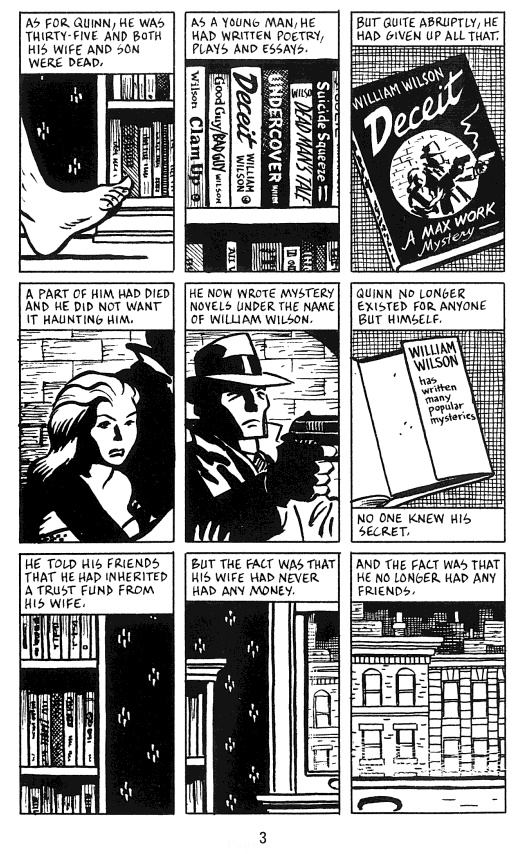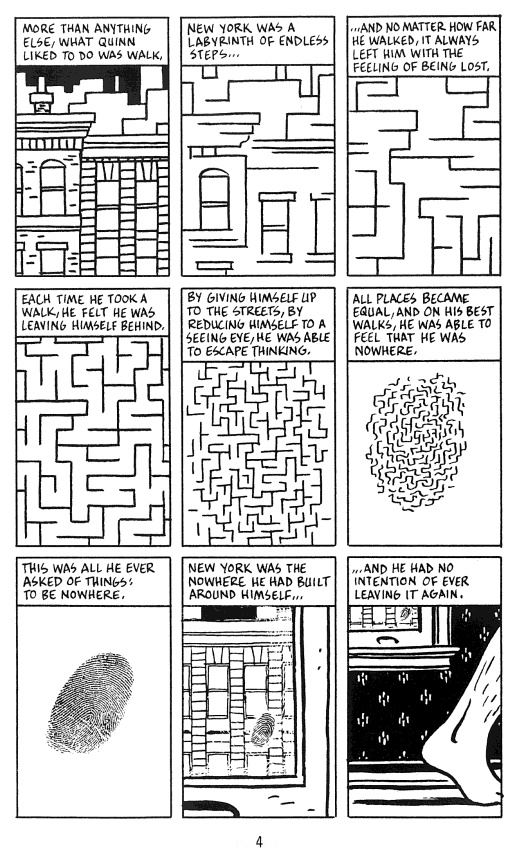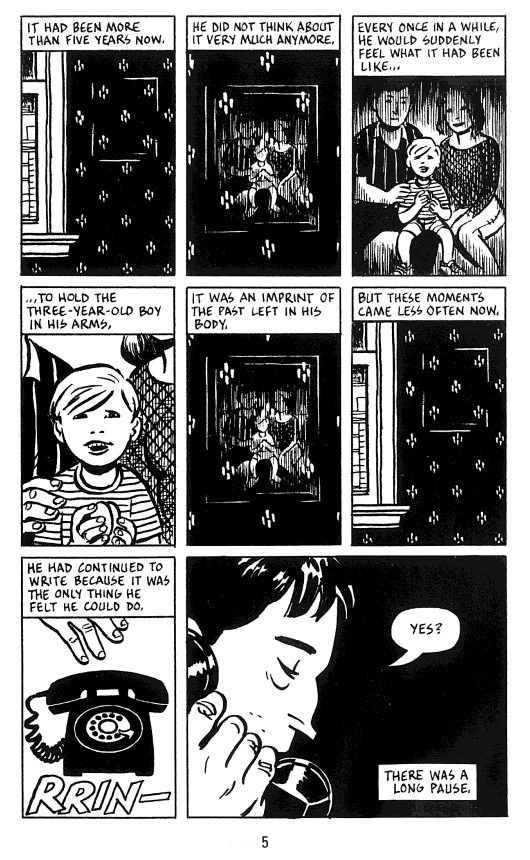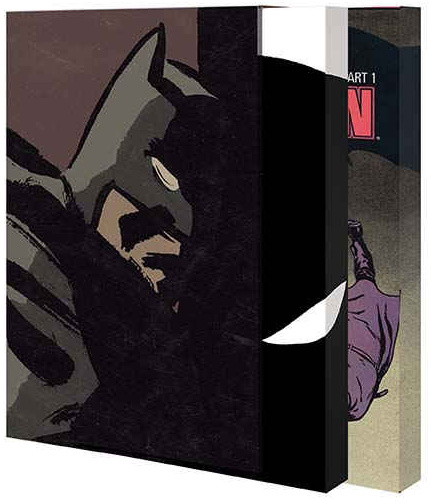I spotted this in a recent previews and after snagging a copy found out City Of Glass The Graphic Novel is a reissue of a 2004 publication that was itself a new printing of a 1994 work. Whew!
Quinn writes mysteries. The Washington Post has described him as a “post-existentialist private eye.” An unknown voice on the telephone is now begging for his help, drawing him into a world and a mystery far stranger than any he ever created in print.
Adapted by Paul Karasik and David Mazzucchelli, with graphics by David Mazzucchelli, Paul Auster’s groundbreaking, Edgar Award-nominated masterwork has been astonishingly transformed into a new visual language.
- Paperback: 144 pages, black and white
- Publisher: Picador (August 1, 2004)
- ISBN-13: 978-0312423605
- Product Dimensions: 8.3 x 5.6 x 0.3 inches
- $14 USD
- Order online: Amazon
My interest piqued by that haunting cover image and the fact David Mazzucchelli handled the artwork. It’s rare to go into material with absolutely no forehand knowledge, and even more so to come away completely satisfied. This is a tale of depression and loneliness that spirals into madness and its effects; no happy endings here.
I’m going to divulge the plot here so if you want to be surprised then skip the next two paragraphs. Daniel Quinn was a mildly successful poet until he lost his wife and son in a car accident. After that, he secluded himself in New York City and began writing crime fiction as William Wilson. He gets a few phone calls for Paul Auster, detective, and eventually gives in and meets with the man calling, Peter Stillman. Peter was raised for nine years in a dark room and is concerned that his father is being released from prison. Peter’s wife Virginia, his former speech therapist, seems to offer a promise of a relationship but in a manner that promotes Quinn to take the case.
Quinn follows Stillman’s father, also named Peter, around the city and eventually makes contact and gets into a lot of material until he loses him. Fearing harm to Virginia and maybe Peter Quinn tracks down the real Paul Auster who is also a writer. He learns nothing other than what his life could have been like if his family were still alive. He stakes out the building he initially went to and doesn’t move for several months, eventually slipping away completely from his former life.
It’s an intriguing and gripping story, very much about language and those who craft it. Paul Karasik and David Mazzucchelli did a wonderful job adapting a very non-visual story. Take this next page for example.
A stunning visual representation of walking in a crowded city but always being alone. Mazzucchelli’s style is lean yet highly detailed when he wants it to be. The ability to bring to life subtle text is truly the mark of a master: check out the page below. A faded memory is resurrected as a family portrait to discuss the loss and then it fades back out. Wow. And that’s just the third page. Later there’s a discussion of the homeless: they’re drawn loose and almost blurry to reflect the dialogue that they go unseen and unremembered.
There’s a heavy emphasis on page layout with a 3×3 grid and expand one panel every other page or so. It’s dense and compact in presentation. Clever movement through panels within the same image show dialogue progressions.
City Of Glass The Graphic Novel is a small book with a large presence. It stands up amazingly well compared to work from this decade and is easy to declare a must-read.
Originally published at Comic Book Daily.






